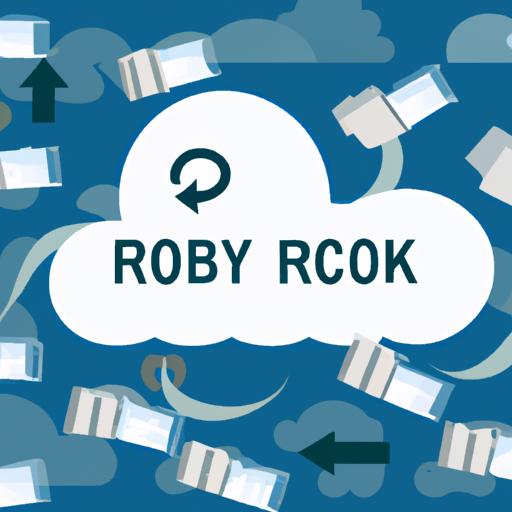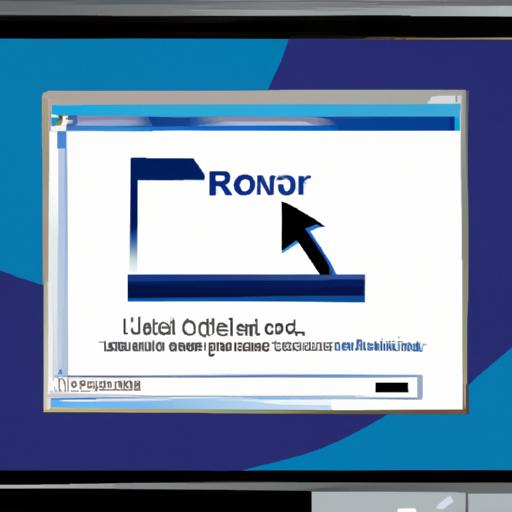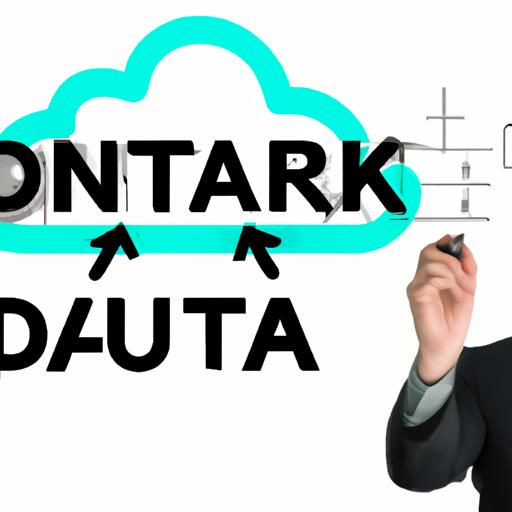Asset management software has become a vital tool for businesses seeking to streamline their operations, enhance efficiency, and maximize their return on investment. As companies continue to grow and expand their portfolios, managing assets can quickly become a complex and challenging task. This is where asset management software comes into play, providing a digital solution to track, monitor, and optimize assets effectively.
A. Defining Asset Management Software and Its Importance
Asset management software refers to a digital platform designed to assist businesses in organizing, tracking, and maintaining their assets throughout their lifecycle. These assets can include tangible items like machinery, equipment, vehicles, or intangible assets such as software licenses and intellectual property.
The importance of asset management software cannot be overstated. It allows businesses to have a centralized system that provides real-time visibility into their assets, enabling efficient asset tracking, maintenance scheduling, and cost optimization. By implementing such software, companies can mitigate risks, reduce downtime, and ensure compliance with regulatory requirements.
B. Understanding the Role of Cost in Asset Management Software
When considering the implementation of asset management software, one crucial factor that must be examined is the cost associated with it. While the benefits of using such software are undeniable, it is vital to assess the financial implications and evaluate the return on investment.
The cost of asset management software can vary significantly depending on various factors. These include the features and functionality offered, scalability and customization options, integration capabilities with existing systems, support and maintenance services, as well as deployment options, such as cloud-based or on-premise solutions.
To understand the true value of asset management software, businesses must conduct a thorough analysis of the costs involved. This includes considering the total cost of ownership, hidden costs that may arise, and the potential return on investment that can be achieved.
In the following sections, we will delve deeper into the factors influencing the cost of asset management software, explore different pricing models prevalent in the industry, and provide strategies to reduce costs while maximizing the benefits of implementing such software.
Intrigued? Let’s dive into the factors that influence the cost of asset management software and discover how to make informed decisions when selecting the right solution for your business.
Factors Influencing the Cost of Asset Management Software
Effective asset management software comes with a range of features and capabilities that can greatly impact its cost. Understanding these factors is crucial for making informed decisions when investing in asset management solutions.
A. Software Features and Functionality
The breadth and depth of features offered by asset management software play a significant role in determining its cost. More advanced software often includes features like asset tracking, maintenance scheduling, lifecycle management, reporting and analytics, mobile accessibility, and integration with other business systems. The complexity and sophistication of these features contribute to the overall cost of the software.
B. Scalability and Customization Options
Scalability is a critical consideration for businesses anticipating future growth. Asset management software that can accommodate expanding asset inventories without compromising performance tends to have higher upfront costs. Additionally, customization options that allow tailoring the software to specific business needs may also impact the overall cost.
C. Integration Capabilities with Existing Systems
Seamless integration with existing systems, such as enterprise resource planning (ERP) software or supply chain management systems, is essential for efficient asset management. The level of integration required, whether through pre-built connectors or custom integration, can influence the cost of the asset management software.
D. Support and Maintenance Services
Reliable support and maintenance services are vital for the smooth functioning of asset management software. The level of support offered, including technical assistance, software updates, and training resources, can impact the cost. Businesses should assess their support needs and consider the associated costs when selecting asset management software.
E. Deployment Options (Cloud-based vs. On-Premise)
The choice between deploying asset management software in the cloud or on-premise can significantly affect the cost. Cloud-based solutions typically involve subscription-based pricing, eliminating the need for substantial upfront investments in infrastructure. On the other hand, on-premise solutions may require dedicated hardware, software licenses, and ongoing maintenance costs.
By considering these factors—software features, scalability, integration capabilities, support services, and deployment options—businesses can gain a clearer understanding of the cost implications associated with asset management software. In the next section, we will explore the various pricing models commonly used in the industry, providing insights into how costs can vary based on these models.
Pricing Models: Finding the Right Fit for Your Business
When considering asset management software, it’s essential to understand the various pricing models available in the market. Each pricing model comes with its own advantages and considerations, and selecting the right one can significantly impact your budget and long-term cost-effectiveness. Let’s explore the commonly used pricing models in the asset management software landscape.
A. Subscription-based Pricing
Subscription-based pricing is a popular model where users pay a recurring fee for accessing the software. This model offers flexibility, with monthly or annual plans available, allowing businesses to scale and adjust their usage as needed. Subscription-based pricing often includes regular software updates, customer support, and cloud storage options. This model is especially beneficial for businesses that prefer predictable costs and want to avoid large upfront investments.
B. Perpetual Licensing Model
The perpetual licensing model involves a one-time upfront payment to acquire the software license. With this model, businesses own the software indefinitely, typically with an optional maintenance and support contract for future updates. While the upfront cost may be higher, the perpetual licensing model can be cost-effective in the long run for businesses that plan to use the software for an extended period or have specific customization requirements.
C. Pay-as-you-go or Usage-based Pricing
Pay-as-you-go or usage-based pricing allows businesses to pay for the asset management software based on their actual usage. This model is advantageous for companies with fluctuating asset management needs or those looking to try out the software before committing to a long-term plan. Usage-based pricing provides the flexibility to scale up or down as required, ensuring businesses only pay for what they use.
D. Free and Open-Source Software Options
For businesses with budget constraints or specific customization needs, free and open-source asset management software options can be a viable choice. These solutions provide access to basic asset management functionalities without any upfront costs. However, it’s important to consider the potential limitations in terms of support, customization, and scalability when opting for free or open-source software.
By understanding the different pricing models available, businesses can align their budget and requirements to select the most suitable option. In the next section, we will explore the key cost considerations businesses should keep in mind when evaluating asset management software.
Cost Considerations When Selecting Asset Management Software
Successful implementation of asset management software requires careful consideration of costs beyond the initial investment. To ensure a cost-effective solution that aligns with your business objectives, the following factors should be thoroughly evaluated:
A. Total Cost of Ownership (TCO) Analysis
A comprehensive Total Cost of Ownership (TCO) analysis is essential when assessing asset management software. TCO goes beyond the initial purchase cost and encompasses all associated expenses throughout the software’s lifecycle. It includes upfront costs, ongoing maintenance fees, training expenses, and potential upgrade costs. By evaluating the TCO, you can make an informed decision based on the long-term financial impact of the software.
B. Hidden Costs to Watch Out For
When selecting asset management software, it’s crucial to be aware of hidden costs that may arise during implementation. These costs can include data migration, integration with existing systems, customization requirements, and additional modules or add-ons. By anticipating and accounting for these hidden costs in your budget, you can avoid unexpected financial burdens down the line.
C. Return on Investment (ROI) Considerations
Determining the potential Return on Investment (ROI) of asset management software is crucial to justify the expenditure. Evaluate the expected benefits, such as improved asset tracking, reduced downtime, and increased productivity. Consider savings from optimized maintenance schedules, enhanced compliance, and better decision-making. By comparing the projected ROI with the software’s cost, you can assess its financial viability.
D. Value-Added Features vs. Unnecessary Expenses
When assessing asset management software, it’s essential to differentiate between value-added features and unnecessary expenses. Identify your core requirements and prioritize features that align with your business needs. Avoid being swayed by flashy features that may not contribute significantly to your asset management goals. By focusing on essential functionalities, you can optimize costs while maximizing the software’s benefits.
Keep these cost considerations in mind as you evaluate asset management software options. Conducting a thorough analysis of TCO, being mindful of hidden costs, assessing ROI, and prioritizing value-added features will help you make an informed decision that ensures a cost-effective solution for your business.
Strategies to Reduce the Cost of Asset Management Software
Implementing asset management software can be a significant investment for businesses. However, there are strategies you can employ to reduce costs without compromising the effectiveness of the software. Let’s explore these strategies and discover how you can optimize your expenses while leveraging the benefits of asset management software.
A. Prioritizing Essential Features
When selecting asset management software, it’s crucial to focus on essential features that align with your business needs. Identify the core functionalities required to streamline your asset management processes and prioritize those during the selection process. Avoid getting swayed by flashy features that may not be relevant to your specific requirements. By focusing on essential features, you can minimize costs associated with unnecessary functionality and avoid paying for features you won’t fully utilize.
B. Negotiating with Vendors for Better Pricing
Don’t be afraid to negotiate with software vendors when it comes to pricing. Many vendors have flexibility in their pricing structures and may be willing to offer discounts or customized pricing based on your unique circumstances. Engage in open and transparent discussions with vendors, explaining your budget constraints and specific needs. This can lead to more favorable pricing terms, helping you reduce costs without compromising on the quality of the software.
C. Considering Long-Term Scalability and Potential Cost Savings
When selecting asset management software, it’s important to consider its long-term scalability. Look for solutions that can grow with your business and accommodate future needs. Investing in scalable software might involve higher upfront costs, but it can save you money in the long run by avoiding the need for frequent software upgrades or migrations to more robust solutions. By considering long-term scalability, you can make a cost-effective investment that aligns with your business growth.
D. Exploring Cost-Effective Alternatives or Open-Source Options
If budget constraints are a significant concern, consider exploring cost-effective alternatives or open-source asset management software options. Open-source software can provide a viable solution with lower upfront costs, as it is typically free to use and can be customized to fit your specific requirements. However, be sure to evaluate the level of support, security, and compatibility offered by open-source solutions to ensure they meet your business needs effectively.
By implementing these strategies, you can effectively reduce the cost of asset management software while still benefiting from its valuable features and functionalities. Remember, the goal is to find the right balance between cost and value, ensuring that the software aligns with your business objectives without unnecessary expenditure.
Conclusion
In conclusion, the cost of asset management software plays a significant role in the decision-making process for businesses. While the initial investment may seem daunting, the long-term benefits and cost savings outweigh the upfront expenses.
Throughout this article, we have explored the definition and importance of asset management software, highlighting its role in enhancing efficiency and maximizing ROWe have also discussed the various factors that influence the cost of such software, including features, scalability, integration capabilities, and deployment options.
Furthermore, we have examined different pricing models commonly used in the industry, such as subscription-based, perpetual licensing, and usage-based pricing. It is crucial for businesses to analyze these models and select the one that aligns with their budget and long-term objectives.
When considering asset management software, it is essential to conduct a thorough cost analysis, including the total cost of ownership, potential hidden costs, and the return on investment. By prioritizing essential features and negotiating with vendors, businesses can reduce costs without compromising the quality and functionality of the software.
Ultimately, the right asset management software can revolutionize the way businesses handle their assets, leading to improved productivity, enhanced decision-making, and increased profitability. It provides companies with the tools they need to streamline operations, optimize costs, and stay competitive in today’s rapidly evolving business landscape.
So, whether you are a small startup or a large enterprise, investing in asset management software can be a game-changer. Embrace the power of technology and take control of your assets to unlock the full potential of your business.
Remember, the cost of asset management software is not just an expense; it is an investment in your company’s future. Choose wisely, and watch your business thrive.



